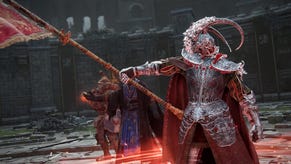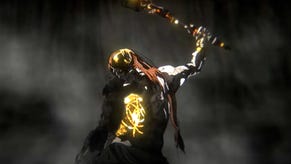Elden Ring is still the best game for spell-slinging (especially with the latest DLC)
Forget your wands, dismount your mythical creatures, and step into the only magical crucible that matters: a Tarnished fight to the death.
Getting magic right in games is hard. You want spells and the art of the arcane to feel satisfying and visceral, but at the same time you want it to evoke all the feelings of lofty knowledge and insight – a feeling both unknowable and unhuman. You want to feel, via your pad of choice, the tingling of magic in your fingertips, the surging of mana in your veins. Simply holding down a trigger button and whispering out some flaccid fire attack doesn’t do the job: you need to feel the weight of your spells, feel the importance of your incantations.
A lot of games get magic wrong. It’s too geometric, or too rigid, or too pissy. I should have known that FromSoft would buck the trend of underpowered, watered-down magic in games – I just never expected the studio to be this good at it.
Our own Alex reflected on how good Elden Ring’s magic is just after the game launched, back in March 2022. “Brute force and ignorance has always been the thing that’s got me through these games – and the same was true with Elden Ring,” he wrote, before explaining that – thanks to the game’s fascinating relationship with all things eldritch – a magic run in Elden Ring helped him fall in love with the game all over again.
After getting really into Bloodborne earlier this year, I thought I’d ignore this: I wouldn’t need to learn the incantations and the spells my peers did. Nah, I would go get a massive blade and make my way through the Lands Between like I made my way through Yharnam: with pig-headed stubbornness and a massive blade. So I traded Ludwig's Holy Blade for Bloodhound’s Fang, and made my way through the lion’s share of the game.
Dextrous, agile, and dench, I managed to slay most bosses without pause: Margit fell in one go, Rennala succumbed with ease, and even Starscourge Radahn and his sorry little horse were cut down within a couple swipes thanks to my great, bladed finesse. It was all going swimmingly; the bosses I couldn’t simply cut down where they stood would eventually falter to my relentless assault. I was invincible! A Tarnished to take on all Tarnished! Let all stand before me and despair!
And then I got to the Lake of Rot. Christ, what a mess. Constantly afflicted by disease, my glass cannon of a build could barely step foot in the poison swamp to end all poison swamps – it doesn’t matter that I could make it through the Deeproot Depths unscathed, or pass through Caelid like a grim tyrant… the rot was too much for me. It set into my blood, my bones, my soul. I thumbed through my inventory, desperately searching for something that would let me overcome this vile geographic barrier that had cropped up, stopping me dead. I found a Larval Tear, and thought ‘fine, let’s get some magic on the go’ and I went to respec my character.
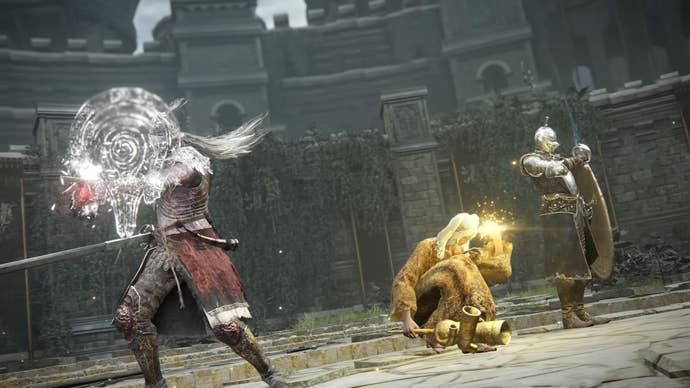
What a difference it made. I armed myself with one of the many staffs I’d pilfered in my journey to date, and set about internalising some of the more interesting-looking incantations I’d acquired from the various dead things in the world. Initially, I’d only done this so that I could cure myself of rot whenever it set into my skin and ate through my armour, but it wasn’t long until I came to my first boss since my rebirth. I stood at the back of the arena and pumped out spell after spell after spell – the animations, the effects, the feeling in my hands all resonating. I felt every hit as it left my fingers and as it landed on my opponent.
All the dodging I’d learned from wielding an impossibly large blade helped me duck and weave and roll around the feckless assault of my enemy. As it recovered and tried to come at me again, I flung space rocks into its skull. I set it on fire. I brought down the judgement of whatever Holy deity had decided to smile upon me that day. And – without taking a hit – I’d killed myself a boss with magic. Wow.
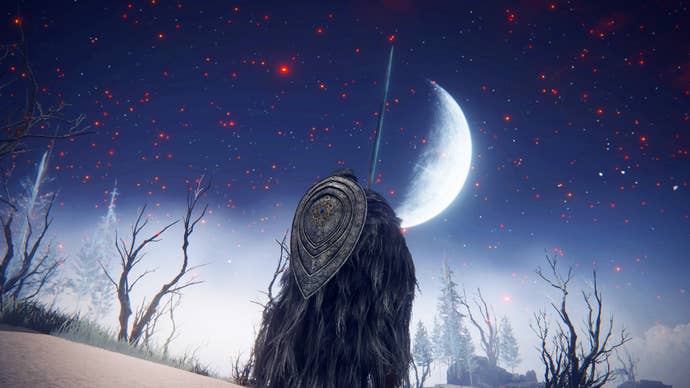
So I got cocky. A friend had invited me into the informal Elden Ring PvP crucible of combat in the Colosseums. Armed with my new build – and a brainful of forbidden magic – I finally took up the invite. It was two-on-two; me and my tank build of a mate versus two rough-and-ready looking sword users. As my mate drew ire and took the brunt of the attacks (all of which barely scratched him, thanks to some obscene blocking and parrying skill), I kited around the melee and pelted his assailants with Holy light, with poison, with fire. With the power of death itself.
They fell. They fell hard. And so, emboldened and blood hungry, we began to invade other players. It wasn’t long before we encountered another mage/tank duo – and it was one of the most satisfying battles of attrition I’ve ever experienced in gaming. We traded spells as our wards traded blows, we healed as they clashed, they recovered stamina as we put as much distance between each other as we could.
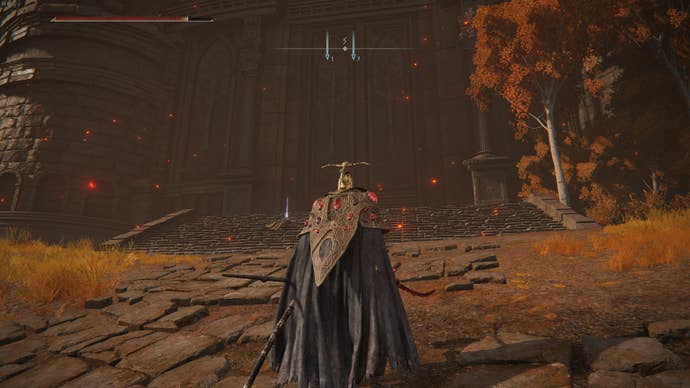
This – this is what I’d wanted from magic battles in games all my life, ever since I’d seen some SeeD supporting their gunblade-wielding allies with fire spells in a mid-game Final Fantasy 8 cutscene when I was about 11. This is how it’s supposed to be: messy, desperate, exhausting, and exhilarating. This is magic as it’s supposed to be in games – none of this flimsy, wand-waving, let’s-all-have-a-nice-time bullshit. Proper, life-draining, soul-harvesting magic. All against the backdrop of a world barely clinging to life as the very soil it’s built on rots away beneath your feet.
I didn’t come to Elden Ring expecting to master the art of wizardry, but trading in my well-worn blade for a sage’s hat and ancient staff may be one of the most rewarding things I’ve ever done in gaming. And I encourage you to do the same, if you haven’t already.



